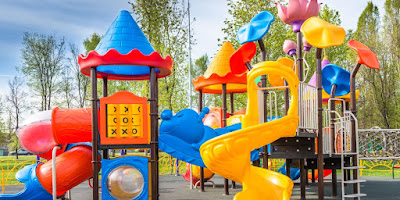The Role of Commercial Playgrounds Equipment in Combating Childhood Obesity
Childhood obesity has become a pressing global health issue, with rising prevalence rates in many developed and developing countries. Factors such as sedentary lifestyles, poor dietary habits, and limited physical activity contribute to this alarming trend. One potential solution to address childhood obesity is the promotion of outdoor play, and commercial playgrounds equipment plays a crucial role in this endeavor. In this article, we will explore what commercial playgrounds equipment entails, the connection between childhood obesity and outdoor play, and how commercial playgrounds can be a key component in combating this health crisis.
Understanding Commercial Playgrounds Equipment
Commercial playgrounds equipment refers to structures and installations designed for outdoor recreational activities for children. These play areas are specifically crafted to provide a safe and enjoyable environment that encourages physical activity, social interaction, and cognitive development among children. Commercial playgrounds come in various forms, including swings, slides, climbing structures, see-saws, and more, all designed to cater to different age groups and developmental stages.
The Importance of Outdoor Play in Childhood Development
Physical Health:
Outdoor play is essential for the physical well-being of children. Engaging in activities on commercial playgrounds helps children develop gross motor skills, coordination, and balance. Regular physical activity also contributes to the prevention of obesity and related health issues.
Social Interaction:
Commercial playgrounds provide a space for children to interact with their peers. Social skills such as cooperation, communication, and teamwork are cultivated through shared play experiences. Later in life, these abilities will be essential for creating wholesome relationships.
Cognitive Development:
Outdoor play stimulates cognitive development by encouraging problem-solving, creativity, and imaginative play. Children learn to navigate challenges, make decisions, and explore their surroundings, fostering mental agility and resilience.
Childhood Obesity: A Growing Concern
The World Health Organization (WHO) identifies childhood obesity as one of the most serious global public health challenges of the 21st century. The prevalence of childhood obesity has increased dramatically in the past few decades, and the consequences are profound. Obese children are more likely to become obese adults, facing a higher risk of developing non-communicable diseases such as diabetes, cardiovascular diseases, and musculoskeletal disorders.
Several factors contribute to the rise in childhood obesity, including:
Sedentary Lifestyles:
The increased use of electronic devices and a shift towards sedentary activities have reduced children's overall physical activity levels.
Unhealthy Diets:
Poor dietary habits, characterized by high consumption of processed foods and sugary beverages, contribute significantly to weight gain and obesity among children.
Lack of Outdoor Play:
The diminishing opportunities for outdoor play in modern urban environments contribute to a decline in physical activity among children.
How Commercial Playgrounds Can Help Combat Childhood Obesity
Encouraging Physical Activity:
Commercial playgrounds are designed to engage children in physical activities that promote exercise and movement. Climbing, running, jumping, and swinging are not only fun but also effective in burning calories and improving cardiovascular health.
Providing a Safe Outdoor Environment:
Commercial playgrounds are designed with safety in mind. The use of durable and non-toxic materials ensures a secure environment for children to play, reducing the risk of injuries associated with physical activities.
Promoting Social Interaction:
Playgrounds offer a communal space where children can interact and engage in group activities. This social interaction is essential for emotional and mental well-being and contributes to the development of healthy interpersonal skills.
Creating Healthy Habits:
Regular visits to commercial playgrounds instill a habit of outdoor play from an early age. Establishing this routine can foster a lifelong appreciation for physical activity and a proactive approach to maintaining a healthy lifestyle.
Community Engagement:
Commercial playgrounds often serve as focal points for community gatherings. By providing a shared space for families and neighbors, these playgrounds contribute to a sense of community and support networks that can encourage healthy habits.
Incorporating Educational Elements:
Some commercial playgrounds are designed to incorporate educational components. Interactive games, puzzles, and themed structures can stimulate children's cognitive development while they engage in physical play.
Conclusion
Childhood obesity is a multifaceted issue that requires a comprehensive approach for effective prevention and intervention. Commercial playgrounds equipment offers a valuable tool in the fight against childhood obesity by promoting physical activity, social interaction, and cognitive development. As communities work to address this health crisis, investing in and prioritizing access to well-designed and safe commercial playgrounds can play a pivotal role in shaping a healthier future for our children. It is imperative that policymakers, educators, and parents recognize the importance of outdoor play in combating childhood obesity and collaborate to create environments that foster the overall well-being of our younger generations.




Comments
Post a Comment